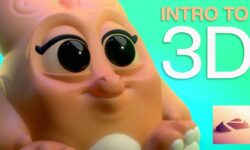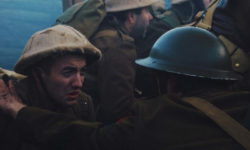Blender Basics – A Quick Intro to 3D Modeling and Rendering by La Boite Pingouin
Release date:2023, April
Duration:02 h 02 m
Author:La Boite Pingouin
Skill level:Beginner
Language:English
Exercise files:Yes
Here is a quick, straight-to-the-point step-by-step guide to learn how to create awesome models and renders with Blender:
Step 1: Get Blender: Download and install the latest version of Blender .
Step 2: Familiarize with Blender’s User Interface: Learn the basics of Blender’s user interface, including navigating the 3D viewport, using the toolbars and panels, and understanding the different editors such as the Outliner, Properties, and Materials.
Step 3: Learn Blender’s Modeling Tools: Get acquainted with Blender’s modeling tools, including creating and manipulating basic shapes, extruding, scaling, rotating, and using modifiers to create complex objects.
Step 4: Import and Manipulate Existing Models: Learn how to import existing 3D models into Blender, manipulate them, and adjust their materials and textures.
Step 5: Apply Textures and Materials: Learn how to apply textures and materials to your objects, including creating and editing materials, UV unwrapping, and using image textures to add realistic details.
Step 6: Create Lighting and Environmental Effects: Learn how to set up lighting for your scenes, including using different types of lamps, adjusting light properties, and creating environmental effects such as HDRIs and volumetrics.
Step 7: Use Blender’s Camera and Rendering Settings: Learn how to set up the camera for your scenes, adjust camera properties, and set up rendering settings such as resolution, samples, and output format.
Step 8: Create Basic Scenes and Animations: Learn how to create basic scenes in Blender, including setting up a background, adding objects, and arranging the scene for composition. Also, learn how to create simple animations using keyframes and the timeline.
Step 9: Final Project: Apply what you’ve learned to create a final scene that showcases your skills. Choose a concept, set up your scene, add details, experiment with composition and lighting, and create a visually appealing and dynamic final product.
Throughout the learning process, practice with practical exercises and experiment with different techniques to gain proficiency in 3D modeling and rendering with Blender. With time and practice, you will be able to create amazing models and renders that showcase your creativity and skills. Good luck!
That’s a great summary of what you will learn! To further break it down, here are the key skills you can expect to gain from learning Blender for 3D modeling and rendering:
- Fundamentals of 3D modeling and rendering: You will learn the foundational concepts and techniques of 3D modeling and rendering, which can be applied to more complex projects in the future.
- Blender interface and basic 3D modeling: You will become familiar with Blender’s user interface and learn how to create basic 3D models from scratch, including using various modeling tools and techniques.
- Textures, materials, and lighting: You will learn how to apply textures and materials to your models to create realistic renders, as well as how to set up lighting to achieve desired effects in your scenes.
- Blender’s rendering engine: You will learn how to use Blender’s built-in rendering engine to create high-quality images of your 3D models, including adjusting rendering settings for optimal results.
- UV unwrapping: You will learn the process of UV unwrapping, which involves flattening the 3D model’s surface to apply textures accurately, allowing you to add detailed textures to your models.
- Composition and lighting principles: You will gain an understanding of the principles of composition and lighting, and how to apply them to create visually appealing 3D scenes that are suitable for rendering.
By the end of your learning journey, you will have a solid foundation in 3D modeling and rendering with Blender, and the skills to create your own 3D scenes, apply textures and materials, set up lighting, and create high-quality renders. Keep practicing and experimenting to hone your skills and unleash your creativity in your 3D projects!





 Channel
Channel





